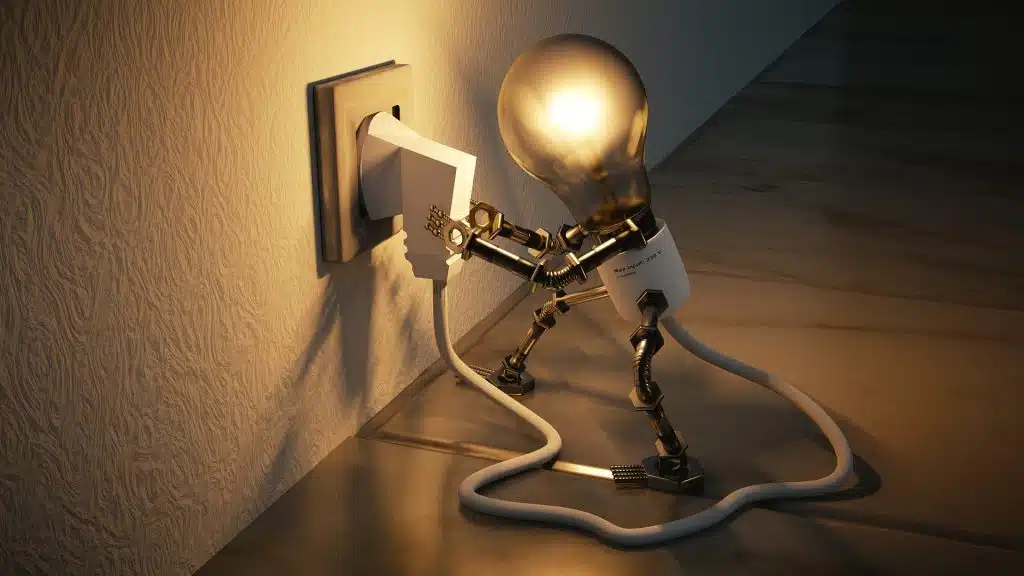IoT is a famous buzz-word these days and it is predicted that IoT will bring on the next big revolution. In this post let’s try and understand what IoT really is, how IoT works and how is it, simply put, “the future”. I have written this post in a practical manner without going too much into the technicality from a beginner’s perspective. Hope you enjoy reading this article!
What is IoT? IoT stands for “Internet of things”. It is a combination of technologies that enable the connection of everyday ‘things’ or objects to the internet. Examples of “things” can include home appliances like lights, microwaves, refrigerators, and washing machines.
Once connected another set of technologies can be used for applications that involve monitoring, control and automation.
A famous example of an IoT application is Google Home.
How IoT works? Sensors are used to collect data about something we are interested in and this data is then sent to the internet where servers can process the data and use it to serve a particular purpose like monitoring and control.
For example, the indoor temperature of various rooms of your house can be the data you are interested in and once this data is sent to the cloud, you can control the thermostat using your smartphone based on the temperature readings.
The example of temperature sensors and thermostat control is a fairly simple one, imagine a situation where you can control almost everything in your home like lighting, ventilation, refrigerator, and not just the thermostat, and you can control them even when you are not in your home all using a single app on your smartphone. Say you come to your workplace and suddenly have this feeling you left something ON, you can just take your smartphone and check it and turn it off if needed, and that’s the power of IoT!
IoT can be applied to not just home automation but to numerous other fields like manufacturing, agriculture, and healthcare. The possibilities are endless. Let’s try to break this technology down into its basic components and try to understand it better in this article.
Internet vs Internet of Things
What is Internet?

Technically speaking, the internet is an international network of computers connected to each other so that they can communicate and share data. You can connect your computer to this network by getting an internet connection with your local internet service provider.
But from an end-user’s perspective, the internet serves 3 purposes
- It is simply the biggest library of information which the end-user can access from any corner in the world.
- It is used for communication through texting, social networks, Voice over IP and video calls.
- It is also used for entertainment like gaming and video sharing
Thus Internet can be thought of as a global network of people connected to each other.
What is Internet of Things?

While the internet is the network that connects people together, the internet of things is a network that connects ‘things’ together.
As we saw earlier “things” refer to objects. But what is the use of connecting the objects together and how is it going to help us? Let’s see some examples of applications of such a network in the next section.
Example Applications of IoT
Applications of IoT can be divided into 2 broad categories
- Monitoring
- Control and automation
Monitoring
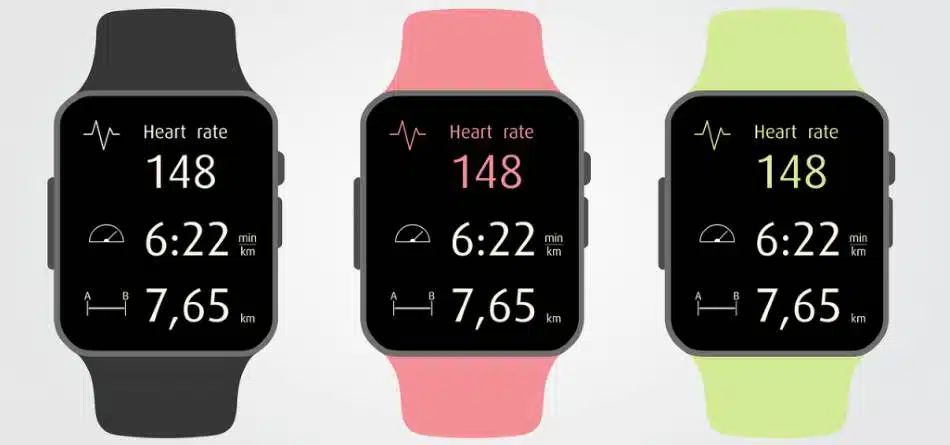
A good example here comes from the healthcare industry. Consider a heart rate monitor, a device that continuously monitors your heart rate, this can be connected to your doctor’s database where some smart algorithms are run to see if everything is normal with you. If it detects some pattern that in the future can lead to some consequences, then it can trigger an alert both to your doctor and you. This can be connected to your doctor’s schedule and yours and based on the next available time that’s free for both you and your doctor, it can automatically book an appointment for you. Also based on the condition, it can even suggest activities you need to do to take care of your health until you go to the doctor.
This makes the process so simple, as
• It detects the condition early on so that it can be treated easily
• It automates the process of fixing the appointment so that it avoids hassles like calling your doctors office during working hours, going through appointment times to fix one that suits you and the doctor and such.
• It gives you the meantime temporary solution based on data about your condition
This is one of many possible applications of IoT in monitoring
Positioning
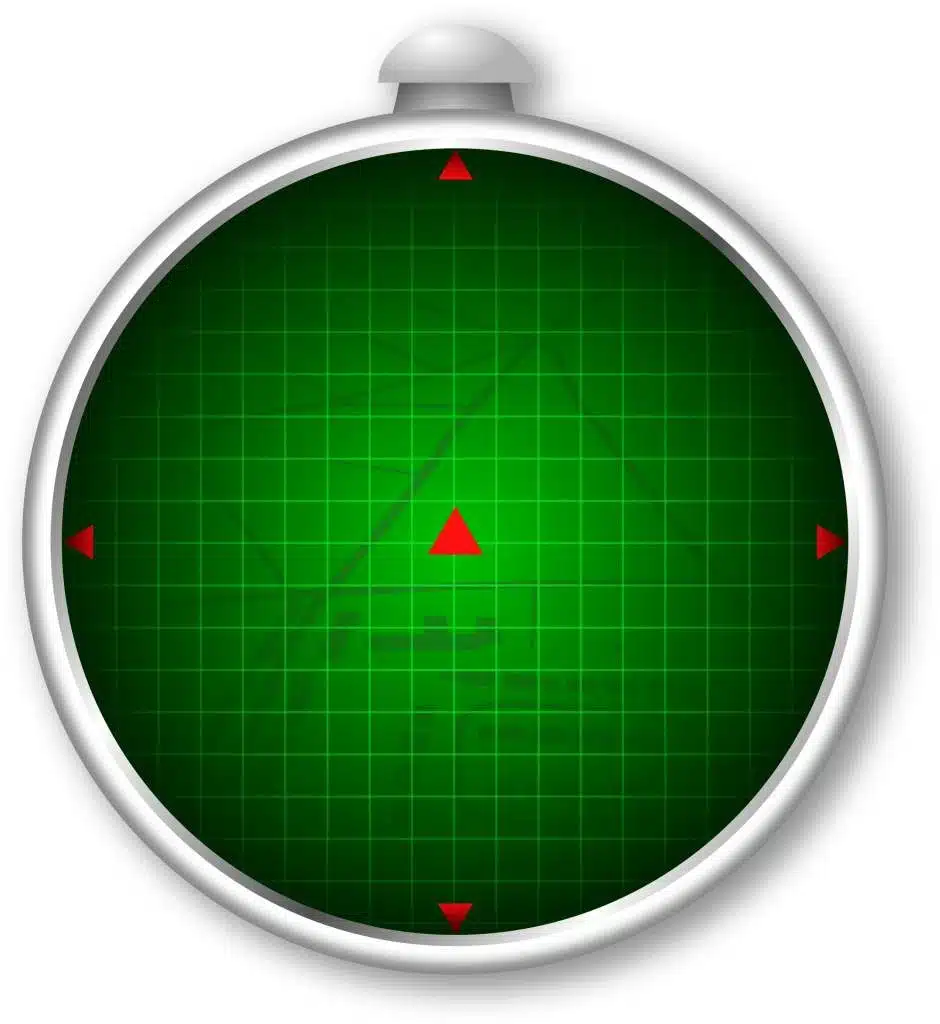
This is another example of monitoring IoT solutions.
At some point in the near future, all the devices will be tagged with some positioning technology, be it Bluetooth, wifi or UWB tags that will be able to let you locate your personal items no matter where they are on the planet. If you are someone like me, who always misplaces your smartphone, keeping it in silent mode, then it will be useful for you to just log into the computer and find out where your smartphone is, instead of wasting time searching in every nook and corner of the house!
In industries these tags can be placed on valuable assets, to keep track of them. A good example is tools in a repair shop. It’s very common for technicians to misplace them and search for them when they actually need it. The present-day solution involves putting an RFID tag on them, and train them to replace the tools on the tool holders at the end of the day. But this does not eliminate the hassle of searching for them. With positioning tags, this can be accomplished with the least hassle.
Control and Automation

Here a good example is industry 4.0, a.k.a the 4th industrial revolution, which is all about automation and control. Several such solutions are being installed in industries all over the world to automate the production process, control the machinery remotely so that no need to be actually present at the factory so that one controller can take care of multiple machines sitting in his office. Just google “industry 4.0” and you will find 1000s of such solutions
Another good example is home automation. Just imagine the ability to automate processes like heating and cooling, lighting, using your smartphone to put custom settings for your home. It’s only a matter of time till a new generation of the home appliance is coming, where even if they are from different manufacturers, they will follow the same protocols and you will be able to control all your home devices through either voice input or smartphones. Google home is a good example of this.
IoT How it Works?
The figure below shows the flow of data from sensors to the cloud.

Step 1: Sensing
As you can see, the first step is to reliably collect the data of interest. Let’s say we are interested in the indoor temperature of your home. Then we need to set a temperature sensor that is capable of sensing temperature and sending them over to do some local processing.
Step 2: Local Processing
The second step is local processing, this step is essential in limiting the amount of data sent to the internet. In our simple temperature monitoring application, maybe it’s a good idea to only send data to the cloud if the temperature reading changes by a minimum of 1 degree. These temperature sensors are often quite noisy and they can spew out an array of readings at 1Hz, and on a typical day, all these readings are only going to vary by +/- 0.5 degrees Celsius. So it’s a good idea to have a local processing server to collect this data, filter it, and discard the unnecessary repeated data and only send the data to the cloud if the value changes.
Step 3: Cloud Processing
This is the 3rd step in IoT. In our temperature monitoring example, the data sent to the cloud can then be sent to a web app, and through that app, the end-user can see that data remotely from anywhere as long as he/she is connected to the internet
Technological Pillars of IoT
As a tech enthusiast, you must be thinking, what technologies are essential in building IoT products and how you can contribute to the field.
The 5 main technologies that are crucial to IoT include
- Embedded engineering
- Networking
- Cloud computing
- Big data and
- Machine Learning
Embedded Engineering and IoT
What is Embedded Engineering?

An embedded system is a “special purpose” computer. Our PCs, laptops, smartphones, and tablets belong to the category of “general-purpose computers” as they are designed for more than one purpose, for example using a laptop you surf online, listen to songs, edit videos, do some programming, learn, write articles and more. But embedded systems also have the basic components of a computer like processor, RAM, and ROM but they are designed to do one specific task, for example, the “computer” inside your washing machine uses the options you selected to build a custom routine to wash your clothes and shows you feedback on how much time is left for you to come back and collect the clothes. Embedded engineering refers to the field where we make custom devices for the given application.
How is Embedded Engineering related to IoT?

Let’s say you need to control your lights in your home automatically such that whenever it’s sunny outside the lights should be turned OFF and when the light coming through the windows go below a certain threshold the light should turn ON.
To make such a system you need 2 things, a light sensor to be placed near the window and a controller that is placed inline with the light’s power connection to act as a switch.
Here 2 embedded systems are needed to achieve a simple application like this one. No matter which IoT application you choose, embedded systems will be the basic building blocks and hence embedded engineering is a key technology to developing IoT products
Network Engineering and IoT
What is Network Engineering?

Network Engineering is a subfield of Computer Engineering that deals with connecting computers together to transfer data among them. In fact, you are using a Network Engineering product right now to read this article, the internet. This article has probably traveled 100s of kilometers from some distant web server to your device, taking various physical medium like optical fibers, copper cables, cellular and wifi networks along the way, all in a matter of milliseconds!
How is Network Engineering related to IoT?
In our above example of a light sensor and the controller, these 2 devices must be able to talk to each other, so that the controller can make the decision of whether to turn on the light or not based on the reading from the light sensor. This can either be achieved through wired or wireless networking technologies. A simple application like this one usually uses Bluetooth Low Energy (BLE) which is less power-hungry protocol and can operate for years on a simple AA battery. But then what if the data need to be sent to the cloud, like in the application that involved monitoring temperature remotely? In this case, we need one more networking protocol to connect to the internet. Usually, in such cases, the controller is connected to the Local Area Network or LAN through ethernet or WiFi IEEE standards. Then this data is usually taken to the server on the internet using fiber optic cables. As you can see, for a simple application like remote monitoring temperature, the temperature reading as the main data payload has to go through a rich variety of networking protocols (Bluetooth, WiFi, UTP Ethernet, Fibre) to reach the server on the internet!
Cloud Computing and IoT
What is cloud computing?

Cloud is another term that is commonly used to refer to the internet. Cloud computing means using a computer that is located in some corner of the planet to do your processing tasks. A famous example of cloud computing is Amazon Web Services(AWS). One cool activity you can do on AWS is that you can sign up and set up your own Linux system using their resources and play with it, all for free! I hope you got the idea of what cloud computing means, lets next see how it is related to IoT.
How is cloud computing related to IoT?

Let’s take the example of a home automation app again which is the IoT solution that involves controlling all your home appliances using your smartphone. In order to access the status of all your appliances remotely say from your workplace, the data needs to be stored on the internet in a database that is continuously updated and synchronized. This is where cloud computing comes in! You can send all the data from your home appliances to a computer on the internet, say to a computer that belongs to the AWS infrastructure, then your smartphone app can easily connect to it and access the necessary information and display it to you. You forgot to turn off the lights? Just take your smartphone app, navigate to your living room and choose the light and select the turn off option. This will send the requested action to the database on the cloud, which in turn connects to your light controller on the other end and turns it off all in a single click!
Machine Learning and IoT
What is machine learning?
Machine learning is a subcategory of computer engineering, where algorithms are used to train the machines to learn without the intervention of a programmer. It has several subcategories like machine vision, natural language processing, and pattern recognition. Some of the famous examples we use today include face and fingerprint recognition software in our smartphones, Voice recognition services like Siri and Google Assistant, and Google translate.

How is machine learning related to IoT?
Let’s take a security-based IoT example, your workplace has a motion detector system that is used to detect intruders after office hours. Its duty is to alert your security company if motion is detected. Imagine your workplace has one of those automatic vacuum cleaners that automatically clean at night. Now your IoT solution must include a way to classify the movement to either the vacuum cleaner or an intruder. (Trust me your security company personnel will not be happy to come to your workplace in the middle of the night and find out that the vacuum cleaner caused the alarm!) Machine learning’s classification techniques can be used here to clear up the confusion caused by our vacuum cleaner!
Big Data and IoT
What is Big Data?

As the name implies big data is just a huge quantity of related data. This is a new field that has emerged recently in the past decade with the advent of the internet and improvements in data storage technologies. Engineers in this field are called Data engineers or Data scientists and their job description involves analyzing the huge amounts of data to find patterns in them, which can later be used in the decision-making process.
How is Big Data related to IoT?
Imagine a world in which everyone uses a wearable tech, something similar to smartwatches but with more sensors to monitor your body. All the data this tech collects is sent to the cloud and this is connected to their health records. A machine learning algorithm can later be implemented on this data that can be used to connect particular symptoms to particular diseases or health conditions. A doctor can then use this IoT solution to diagnose your problems much sooner and much more accurately than it is possible using the present methods. This way even before a disease starts to show its symptoms you can get treated for it and avoid going through the pain of intense therapies. Thus our IoT solution here acts as a producer of valuable data in large quantities, in other words, Big Data! This is already happening, hospitals around the world are collaborating with each other sharing their data to do just what we described and with the advent of IoT solutions, it is expected to have a big impact on the healthcare industry.
Another example in which you have already seen big data in existence is Amazon shopping. Have you noticed the“What other items do customers buy after viewing this item?” section in the Amazon product like in the screenshot below? (got that after entering a product page on Raspberry Pi)
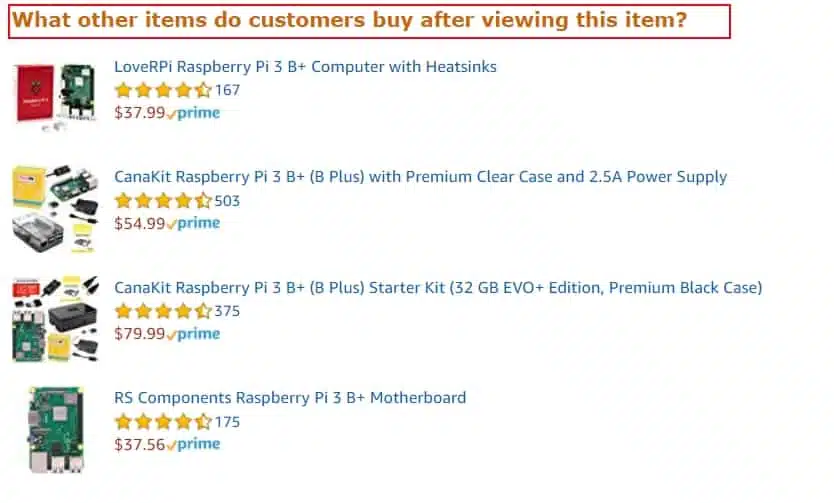
They are just using the data they collected from customers, particularly their search history and purchase history to show us these recommendations, meaning a large number of customers who used that particular search term ended up buying those products in the recommendations section!
Challenges to IoT
Power Efficiency
IoT solutions run on electricity just like everything else. This means they can either be connected to the power supply socket on the wall or to a battery. IoT solutions, most importantly mobile ones have this need to be recharged frequently which is a big burden on the end-user.
Wireless technologies, in particular, consume a lot of power for the transmission of data. To prevent this several technologies are being developed and are being refined. Bluetooth Low Energy (BLE) a.k.a Bluetooth smart is one of such technologies that promise running devices for years at a time without any recharge! But this only serves a limited subset of IoT solutions possible.
On the other hand battery technology is improving to help us charge our devices faster and have better energy capacity to weight ratios. Graphene battery technology is a famous example of this.
Bandwidth
This is another issue being faced by IoT solutions. If things or machines are taking up all our internet bandwidth, then will there be any left for us humans?
There are 3 approaches to tackle this problem
- Make a separate network for the machines
- Increase the available bandwidth
- Do more processing before sending the data to the cloud.
Research and advancements are being made on all the above-mentioned approaches. A famous example includes a fiber-optic network that can handle huge amounts of data and advancements in cellular technologies.
Data Privacy
Can this data be traced back to a particular individual? This is a question that comes with any data collection mechanism. Companies these days are using the approach of collecting this data anonymously so that nothing can be traced back to the end-user. But how effectively this is being implemented is another story entirely. This is one of the challenges that need changes in government policies to be properly implemented.
If you are a user of Gmail, you would have noticed at some point of time that once you book a flight ticket, your flight details will be automatically added to your Google services. This is one such implementation of using anonymous data by Google. Another example is the amazon recommendations we saw in the section about Big Data. Yet another one can be your youtube recommendations! If you ask me I would say, yes this is a nice use of my data, but I would still prefer it if it is not traced back to me by even the persons working for Google or Amazon!
But can IoT be made secure? The answer is yes it can be. Our most crucial asset is our bank account. If the technology has grown enough for us to do our transactions over the internet instead of going directly to the bank, then since IOT uses the exact same internet and its protocols for communication, it should be safe enough for us to use. (Just make sure your password is more than 8 characters long and has at least one upper case character and a number and a special symbol 😉 ).
Skilled Engineers
As we have seen throughout this article a large number of technologies are needed to develop one particular IoT product. Companies, especially startups are facing a shortage of skilled engineers who understands all these technologies and are able to wear multiple hats on their job role!
The only way of tackling this problem is through education and universities these days have started to update their curriculum and have made specializations for IoTs.
How IoT is going to transform our future?
Now that we have seen some of the applications, we can begin to understand that IoT can bring about endless possibilities. If there is a problem without a solution, IoT can produce one. If there is already a solution, IoT can give us a more efficient one!
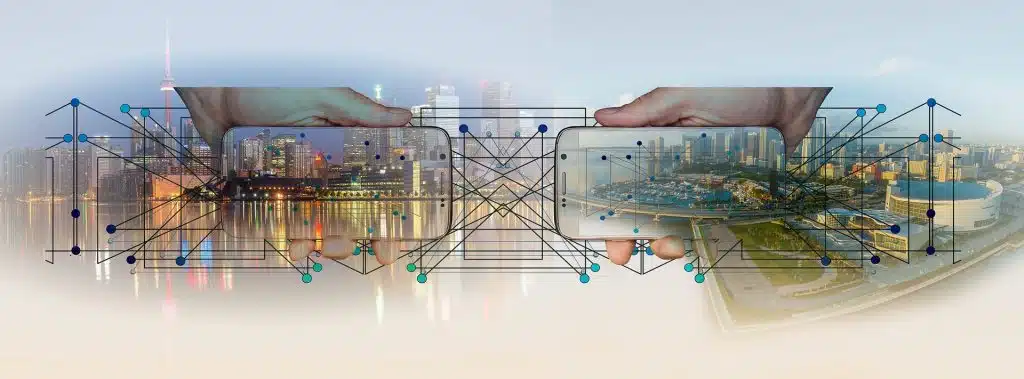
An artist can’t make a sculpture without the right clay, similarly, Machine learning and artificial intelligence algorithms need the right data to make their predictions. This is where IoT comes in. Our IoT devices can be used to log the much-needed data required for AI to learn from and evolve. Medicine is a field that is expected to have a massive transformation using IoT and AI.
Imagine how anonymously collected medical data from millions of people using IoT products can be used to predict symptoms of diseases at very early stages and cured effectively.
When can we expect the internet of things age to begin?
The fact is we are already living in this age! It started around 2008 when we had more devices on the internet than the number of human beings on our planet!
Predictions say we should reach the point where 8 objects per person will be connected to the internet by 2020. This momentum is expected to continue on for the foreseeable future!
Thus IoT as a field is full of possibilities and potential that needs engineers from all different areas of science!
Related Questions
What is an IoT platform? Its a base on top of which you can build IoT application. Instead of building everything from scratch, you can use the platform’s networking and computing capabilities and just focus on your application.
How to start making IoT applications? The best way to start is to actually build a small IoT application through one of the several available tutorials online. Once you build your first application, see what are interested you most and try to get mastery in it.
Hope this post was helpful!
You can email us or contact us through this link if you have any questions or suggestions.
If you liked the post, feel free to share this post with your friends and colleagues!

